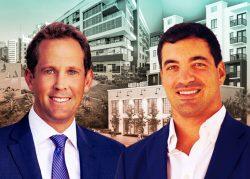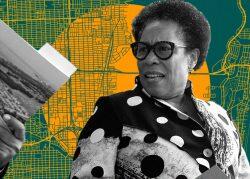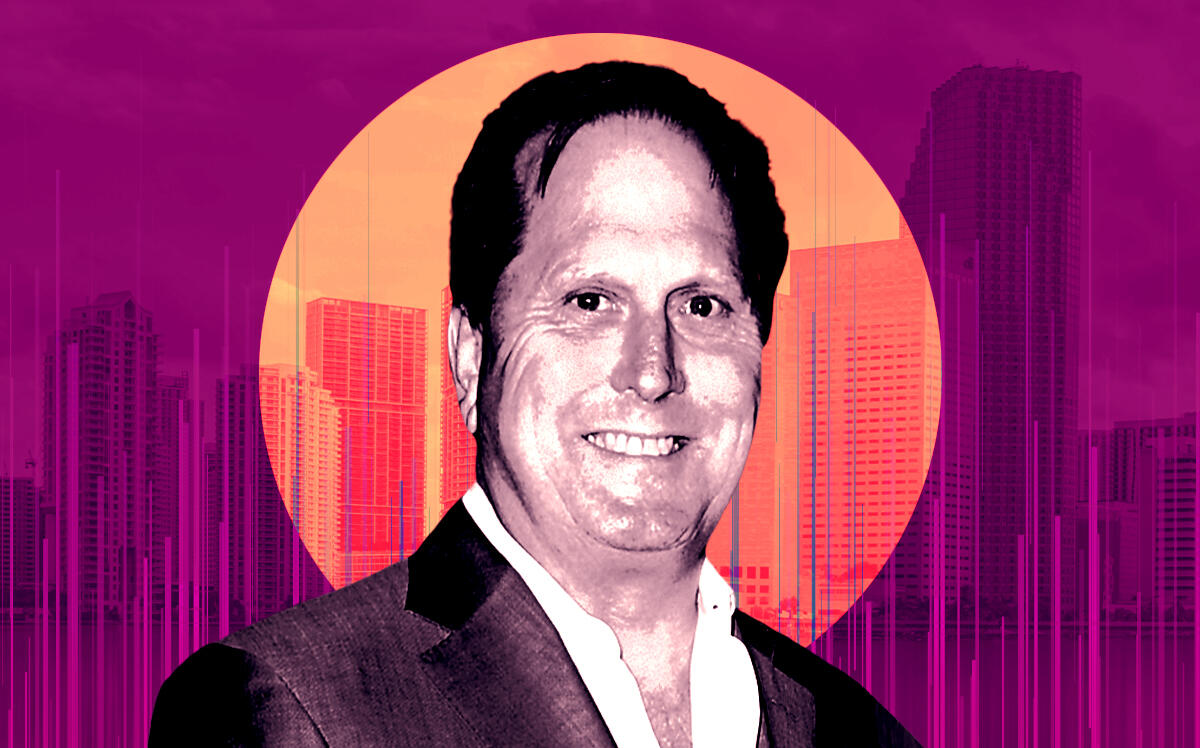Beginning in late 2020, real estate players pounced on South Florida’s booming market in bid to capitalize on a bonanza spurred by unprecedented demand and ever-increasing rents across asset classes. But now that high borrowing costs crashed the party, some developers could be exposed to financing complications and distress.
Lewis Swezy isn’t one of them.
If his name doesn’t ring a bell, you’re not alone.
For more than four decades, he has remained relatively off the radar while sticking to a playbook that’s a hedge against market slumps.
Swezy’s Centennial Management has a portfolio of 3,500 affordable housing units and the potential to build more on his vast landholdings in south Miami-Dade County.
Incognito mode
The 65-year-old never put much into self promotion. His firm’s website, which he described as “outdated,” doesn’t list all of his properties, but does include an “under construction” page.
Swezy lets his work do the talking, according to Kevin Morris, an affordable housing broker with Colliers.
“Given the number of units he has and number of deals he has been in, he definitely has the lowest profile [in the industry],” Morris said.
Swezy’s real estate journey began in the early 1980s. Fresh out of college, he helped his mother, the late Ruby Stripling Swezy, a one-term Hialeah council member, develop a 16-unit Section 8 project.
“I looked at her numbers and I said, ‘You know, mom, this program looks pretty good. Why don’t we try to do it with some other things?’” he recalled.
The government’s guarantee of a good chunk of the rent for Section 8 units was enticing to the pair. Their life experiences had made them averse to financial risk: She lived through the Great Depression, and he was raised by schoolteachers in blue-collar Hialeah.
In 1986, they seized on the new low-income housing tax credit program but at first, it was “hard to make the numbers work,” Swezy said.
The program awards tax credits to developers, who sell them to investors and use the proceeds to finance projects. The price of credits is determined by the free market.
“At that time … credits were selling for 50 cents to the $1. So if you had $1,000 in credits, you could only get $500,” Swezy said. “Today, they sell for approximately 94 cents to the credit … so they become much easier to work with.”
The mother-son duo parted ways in 2000, and Swezy has since been a lone-wolf developer. It’s a role that has suited him.
“A lot of times people [partner because they] need capital,” he said. “I always did a lot of land deals … buy tracts of land and get the entitlements and maybe even do a subdivision, and I would sell that land and it always generated a lot of capital for me.”
Centennial’s holdings include 227 acres in the south Miami-Dade neighborhoods of Naranja and Princeton and the municipality of Florida City, records show.
Purchased for anywhere from $33,000 to $250,000 per acre since the early 2000s, the tracts could be a backup treasure trove, as south Miami-Dade land sales have notched roughly $800,000 an acre in recent years. For now, Swezy plans to lease 80 acres for truck parking and build apartments on the rest.
His portfolio is also diversified. He owns 800,000 square feet of fully leased industrial real estate and roughly 700 market-rate apartments, many of which were phased out of Section 8 and other low-income housing programs. His strategy? Buy cheap, wait for rents to increase.
In 1990, when South Beach was riddled with boarded-up buildings, he made one of his few market-rate apartment plays, paying $160,000 for a 10-unit Pennsylvania Avenue property.
“If I could buy in Miami Beach at half the price of Hialeah, if you can see those dis-equilibriums, there’s opportunity,” he said.
He currently has four affordable projects in the pipeline: the 190-unit Cordova Estates in Florida City, the 149-unit Stadium Towers Apartments in Miami’s Allapattah, the 150-unit Harbour Springs in Naranja and the 124-unit The Heart of Boynton in Boynton Beach.
Centennial was partly selected for the Boynton project because it “brought in the same idea that the community has, which is our stuff should look nice,” said Michael Simon, who worked for the city when it approved gap project funding in 2021.
Despite his introverted persona as a developer, some who have crossed paths with Swezy are well aware of him and unimpressed.
A scathing suit was filed against him in 2018 when Centennial’s Banyan Club apartment complex in Pompano Beach made headlines after a fire broke out in one of the units, killing two sisters, one 5 years old and the other 5 months. The father’s suit against Swezy and Centennial settled confidentially last year.
But that won’t erase the blistering words etched in court records.
Swezy testimony showed “a complete indifference, gross negligence as to indicate a wanton disregard for the rights and safety of others,” Judge Carol-Lisa Phillips wrote in an order last year. “No scheduled inspections were performed, the apartment building had been previously cited for fire alarm violations.”
Swezy maintains he was not at fault.
“If somebody wants to burn a unit, what can I do about it?” he said. “Nothing I can do about it.”
The payoff
Affordable housing is largely bankrolled by government financing that carries lower interest rates than the private debt market, according to experts. Although the asset class is considered a bigger windfall for developers than luxury apartments, Swezy insisted otherwise.
“Everybody thinks it’s a homerun,” he said. “It looks easy to everybody.”
Easy or not, the current market climate could be a boon for Centennial. In already severely cost-burdened South Florida, the demand for low-income units is expected to grow.
Government incentives have likely kept Swezy busy. Developers who build affordable housing can capitalize on reimbursements up to 15 percent or tax credits, according to Morris.
“It’s a significant incentive,” he said. “A market-rate apartment owner really has to work to get that type of return that is based in an affordable development.”
Swezy pushed back on this assertion, and said some financing programs require developers to defer incentives and instead reinvest in their projects.
Government regulations can also potentially eat up earnings because they require affordable housing landlords to maintain the properties, said Sebastian Jaramillo, an attorney who has represented low-income housing landlords.
Nevertheless, the profits are “much higher than in higher-end properties,” Jaramillo said. And Swezy has benefited.
His lifestyle is a far cry from his humble Hialeah beginnings. A trust in his name dropped $17 million for a palatial seven-bedroom home in Hillsboro Beach in 2014, records show. The house, designed by Mexican firm Ricardo Legorreta, sits on 8.5 acres spanning from the Atlantic Ocean to the Intracoastal Waterway.
He has no qualms about how he and his firm would fare in an economic slump.
“Even in the 2008 meltdown, we experienced very little vacancy,” he said.
He does, however, have qualms about this story, and echoed what The Real Deal learned during its reporting when he said, “I am just a very private person.”
Read more



